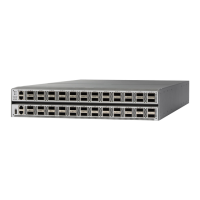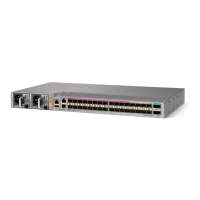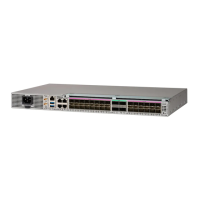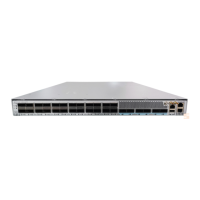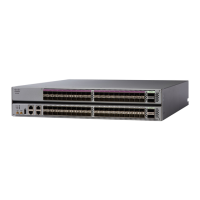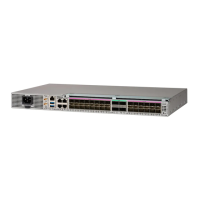link states in their area only. They do not know about all link states in the network. The agreement of the
database information among the routers in the area is called convergence.
At the intradomain level, OSPF can import routes learned using Intermediate System-to-Intermediate System
(IS-IS). OSPF routes can also be exported into IS-IS. At the interdomain level, OSPF can import routes learned
using Border Gateway Protocol (BGP). OSPF routes can be exported into BGP.
Unlike Routing Information Protocol (RIP), OSPF does not provide periodic routing updates. On becoming
neighbors, OSPF routers establish an adjacency by exchanging and synchronizing their databases. After that,
only changed routing information is propagated. Every router in an area advertises the costs and states of its
links, sending this information in an LSA. This state information is sent to all OSPF neighbors one hop away.
All the OSPF neighbors, in turn, send the state information unchanged. This flooding process continues until
all devices in the area have the same link-state database.
To determine the best route to a destination, the software sums all of the costs of the links in a route to a
destination. After each router has received routing information from the other networking devices, it runs the
shortest path first (SPF) algorithm to calculate the best path to each destination network in the database.
The networking devices running OSPF detect topological changes in the network, flood link-state updates to
neighbors, and quickly converge on a new view of the topology. Each OSPF router in the network soon has
the same topological view again. OSPF allows multiple equal-cost paths to the same destination. Since all
link-state information is flooded and used in the SPF calculation, multiple equal cost paths can be computed
and used for routing.
On broadcast and nonbroadcast multiaccess (NBMA) networks, the designated router (DR) or backup DR
performs the LSA flooding.
OSPF runs directly on top of IP; it does not use TCP or User Datagram Protocol (UDP). OSPF performs its
own error correction by means of checksums in its packet header and LSAs.
In OSPFv3, the fundamental concepts are the same as OSPF Version 2, except that support is added for the
increased address size of IPv6. New LSA types are created to carry IPv6 addresses and prefixes, and the
protocol runs on an individual link basis rather than on an individual IP-subnet basis.
OSPF typically requires coordination among many internal routers: Area Border Routers (ABRs), which are
routers attached to multiple areas, and Autonomous System Border Routers (ASBRs) that export reroutes
from other sources (for example, IS-IS, BGP, or static routes) into the OSPF topology. At a minimum,
OSPF-based routers or access servers can be configured with all default parameter values, no authentication,
and interfaces assigned to areas. If you intend to customize your environment, you must ensure coordinated
configurations of all routers.
Comparison of Cisco IOS XR Software OSPFv3 and OSPFv2
Much of the OSPFv3 protocol is the same as in OSPFv2. OSPFv3 is described in RFC 2740.
The key differences between the Cisco IOS XR Software OSPFv3 and OSPFv2 protocols are as follows:
• OSPFv3 expands on OSPFv2 to provide support for IPv6 routing prefixes and the larger size of IPv6
addresses.
• When using an NBMA interface in OSPFv3, users must manually configure the router with the list of
neighbors. Neighboring routers are identified by the link local address of the attached interface of the
neighbor.
• Unlike in OSPFv2, multiple OSPFv3 processes can be run on a link.
• LSAs in OSPFv3 are expressed as “prefix and prefix length” instead of “address and mask.”
Routing Configuration Guide for Cisco NCS 5500 Series Routers, IOS XR Release 6.3.x
102
Implementing OSPF
Comparison of Cisco IOS XR Software OSPFv3 and OSPFv2
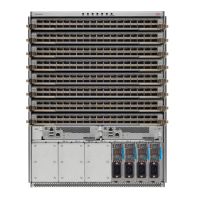
